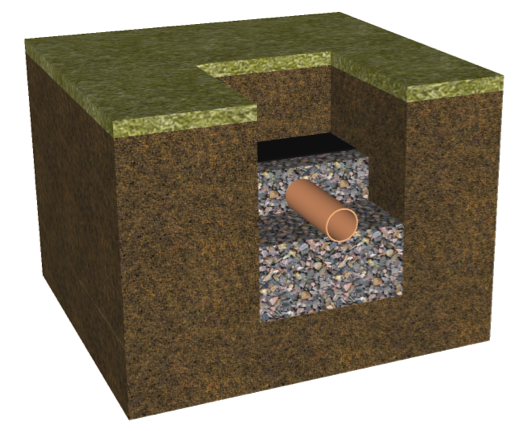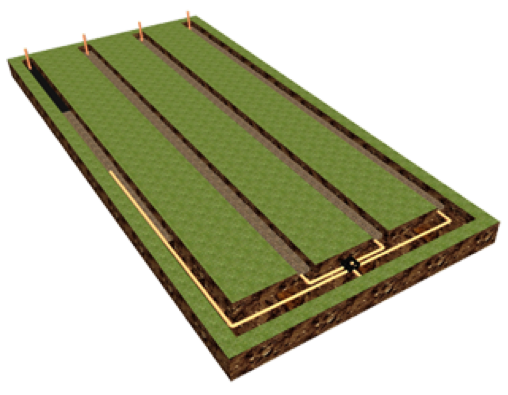Molloy Precast
How does a percolation area work?
A percolation system is now standard for all new septic tanks installed in Ireland today. These systems are engineered to treat the partially treated effluent from the septic tank and to distribute this treated liquid into the underlying ground water. If constructed correctly, and the site has the right conditions a standard percolation system will last trouble free for many years with little maintenance. A typical percolation system is composed of a series of trenches half a meter wide and 18m long. Each trench is made up of the following components as seen in the image below, 250mm of clean stone, a 4” distribution pipe, a second layer of clean stone to cover the pipe and a geotextile membrane covered with a layer of soil brought up to ground level. It is important that the trench is ventilated for an adequate oxygen supply.

This is achieved by connecting the pipes at the end of each trench together and pointing a single pipe out of the ground for ventilation. This ventilation pipe can be brought up near a fence or boundary if desired. Effluent from the septic tank has to be fed into a distribution box. The purpose of this box is to ensure that each trench receives an equal volume of wastewater. Over dosing one trench will cause that trench to breakdown.
Biological treatment of the wastewater is achieved at the soil/stone interface, where a layer of bacteria or biofilm uses pollutants in the wastewater as a food source under oxygen rich conditions. This process ensures a pollutant free liquid enters the ground water system. To ensure that effluent is adequately treated a depth of 900 mm of un-saturated soil is required as a buffer between the invert of the trench and the water table.
Common percolation installation errors
Errors are often made when constructing percolation systems, which often lead to failure of the system. It is important that the distribution stone used in the trench is clean as residue on dirty stone can settle on the bottom of the bed creating an impermeable layer causing the percolation area to fail. The distribution pipe used should be perforated and rigid. Traditionally flexible land drainage pipe was used, this pipe has two major flaws and under no circumstances should it be used in a new percolation system. Land drainage pipe is flexible and often creates hills and hollows which will prevent flow along the length of the pipe. In addition, land drainage pipe is ribbed which also restricts flow along the pipe.
Sizing a percolation area
The number of trenches required for a domestic house is dictated by the number of people in the household, one trench per person. Most County Councils assume that every bedroom has a potential occupancy of 2 persons. For example a three bedroom household to have a potential of 6 occupants and hence 6 trenches are required.
